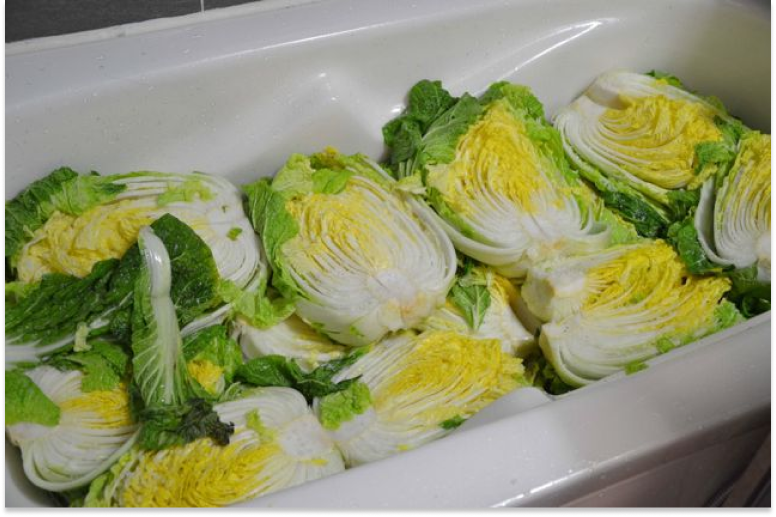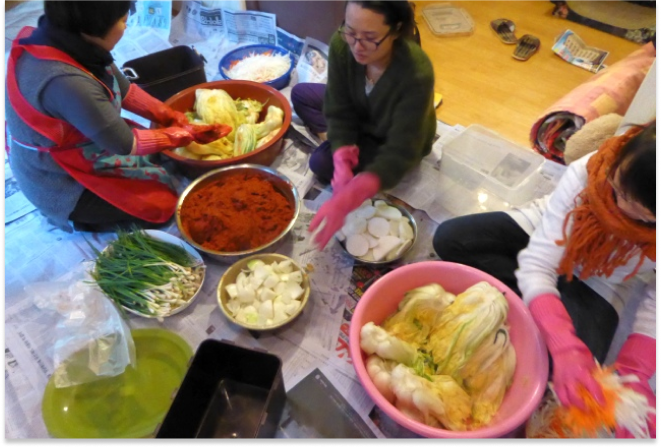“The cabbage should be as long as a rabbit. The leaves should be grasping onto each other, the cabbage firm and heavy. It should weigh more than it appears to weigh--like Grandpa. The leaves should shine, even without being washed.”
- 엄마

When you hear “kimchi,” traditional napa cabbage kimchi comes to mind. Dad once told me a story that kimchi saved Korean lives during an pandemic: When a feverish Korean ate kimchi, the kimchi’s refreshing fermentation cooled the body down. A recent Korean-French study found that kimchi helps ease Covid-19 symptoms.
As soon as I get off the bus, I run to the bathroom to wash my hands. To my right is the bathtub filled to the brim with cabbages and saltwater. The cabbages are stacked into an irregular pyramid. It’s November, which means it’s the Kim family’s annual kimchi-making week. And for the first time, now that I’m in first grade, I can participate.
kimjang /gim-jahng/ n.
When your family sits around bowls of kimchi, gochugaru paste, and other vegetables for hours to cover each and every cabbage leaf with the gochugaru paste.


Kimchi Recipe
- Choose a good napa cabbage
- Split the cabbage in half, lengthwise
- Brine in a salt water bath for at least 6 hours
- Make the gochugaru paste
- Coat each cabbage leaf with paste
- Enjoy immediately or let ferment
Gochugaru is the cornerstone of Korean cuisine. While translated as “red pepper grounds,” it can’t be substituted with red pepper flakes or cayenne pepper. Made from sun-dried chile peppers, gochugaru is hot and sweet, with smoky notes. My mom would always ask Grandma to bring some from Korea when she’d visit.